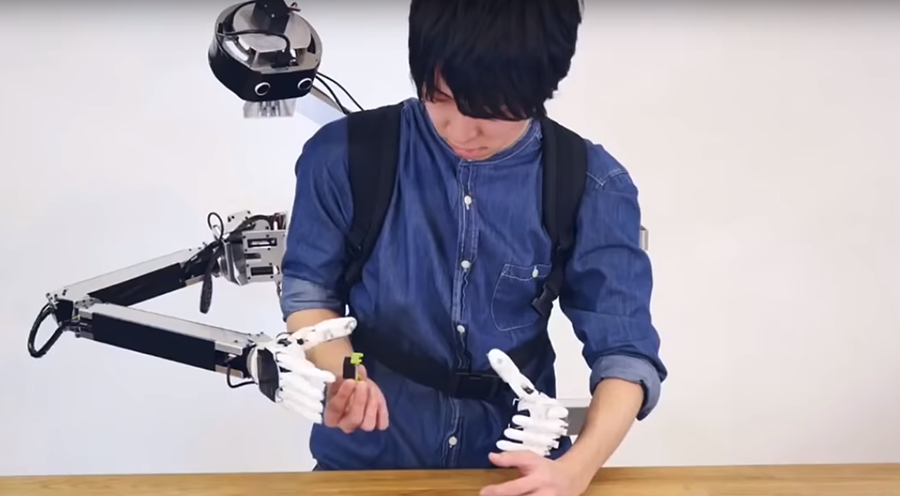Engineers at Embodied Media, a Keio University project that aims to create Haptics, VR, Telexistence & Enchanted Things by studying embodied informatics in human interaction, have created Fusion, a wearable robotic backpack with two arms that can help the wearer in collaborative projects.
Read more ReWalk Robotics Says Updated U.S. VA Policy Expanded Access to its Exoskeleton
“Fusion is a telecollaboration system that allows two participants to share the same point of view and physical space for remote operation and collaboration. The system is designed as a backpack, and is operated in three different modes: direct collaboration, enforced body guidance, and induced body motion, enabling effective communication,” according to Embodied Media.
The Fusion can also be used in a situation where an extra body is needed, but no one else is around.
The brain behind Fusion is Syrian designer Yamen Saraiji. It was developed during Saraiji’s PhD studies at Keio University Graduate School of Media Design in Japan.
A second user wearing an Oculus Rift VR headset maneuvers the robotic arms from a distance by operating the platform’s handheld Touch controllers.
The head of the robot which peers over the shoulder of the user, has two cameras that act as eyes to capture a live video feed that’s streamed to the operator.

“These arms can be used independently of the surrogate arms for collaborative scenarios or can be linked to surrogate’s arms to be used in remote assisting and supporting scenarios. Using Fusion, we realize three levels of bodily driven communication: Direct, Enforced, and Induced. We demonstrate through this system the possibilities of truly embodying and transferring our body actions from one person to another, realizing true body communication,” says Saraiji in his Youtube channel.
Saraiji believes his backpack robot could be used in situations where people want to give instruction or help remotely.
Read more Borns, AI-Powered Minimally Invasive Surgery Has Huge Prospects in Healthcare
“Effective communication is a key factor in social and professional contexts which involve sharing the skills and actions of more than one person,” says Saraiji in his video. “However, sometimes it’s difficult to cooperate from a different point of view in remote situations, when the participants are physically separated.”
“Fusion enables two people to share the same point of view, with the capacity to reproduce the body motion of an operator into the surrogate.”












